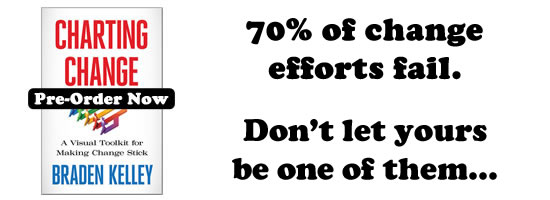The Rise of the Chief Ecosystem Officer
The New Leaders of Innovation in Health
 Overwhelmed by lifestyle- and age-driven burdens and suffering from diminishing resources, many health systems, care institutions, structures and practices are straining to even maintain let alone improve outcomes. Many well-meaning and rationally planned interventions struggle to make a significant or lasting difference. They address temporary symptoms rather than root causes. They merely tinker around the edges of complex health systems and they fail to identify the most promising opportunities for change. The result? Health spending grows and becomes more wasteful whilst outcomes plateau or worsen. Patients and professional caregivers become increasingly dissatisfied whilst their expectations rise. The social determinants or root causes of disease and conditions are ignored whilst their consequence costs mount up.
Overwhelmed by lifestyle- and age-driven burdens and suffering from diminishing resources, many health systems, care institutions, structures and practices are straining to even maintain let alone improve outcomes. Many well-meaning and rationally planned interventions struggle to make a significant or lasting difference. They address temporary symptoms rather than root causes. They merely tinker around the edges of complex health systems and they fail to identify the most promising opportunities for change. The result? Health spending grows and becomes more wasteful whilst outcomes plateau or worsen. Patients and professional caregivers become increasingly dissatisfied whilst their expectations rise. The social determinants or root causes of disease and conditions are ignored whilst their consequence costs mount up.
But, there are grounds for optimism. The rapid development of digital technologies and data coupled with advances in personalised medicine promises to empower professionals and patients, drive new forms of collaboration within and beyond physical care settings, and target preventive and treatment interventions more effectively. In the next decade, there will be tremendous opportunity to transform healthcare as well as create new systems for achieving and sustaining more healthy societies.
Whether fighting from the inside or seeking to shift the paradigm from the outside, the healthcare problems we face today cannot be resolved through the same logic we have used in the past. Clinically oriented and technology-biased thinking is too limiting a view. We need to shift from a primary concern with the design of solutions to one focused on understanding problems more deeply. The more sub-optimal solutions we throw at problems, the greater the complexity we create and the more we risk masking the underlying causes of ill-health and poor outcomes. Rather, to resolve complex, deeply rooted, connected, dynamic and most of all – human – issues in health (not just healthcare – that’s sick care), we need to go beyond traditional solution-first and technology-focused conceptions of innovation and value. Doing so will reveal more holistic and a greater number of valid opportunities for addressing root causes, increasing access, reducing inequities, developing patient capabilities, lowering costs and achieving new as well as improving existing outcomes.
The health ecosystem view in practice
But where do we start? Well I argue we need to take an ecosystems view of value but most importantly, understand what this actually means for innovation in practice. As you will probably all know, an ecosystem view of health states that patients, practitioners, payers, providers, policy makers, public institutions and private companies are all interconnected. Their (in)actions and interventions in one part of a health ecosystem affect the choices, behaviour and (in)actions of other actors in the same or adjacent ecosystems – both positively or negatively. Just as in nature, every actor in a health ecosystem can be viewed as an organism whose adaptations (innovations) affect the whole ecosystem (the environment) in one way or another.
In practice, an ecosystem perspective means that organisations that conceive, design, deliver and intervene with novel health technologies and services must consider themselves to be organisms too. And their leaders must become a new kind of CEO – a Chief Ecosystem Officer. They must adapt and shape their innovation and strategy capabilities and processes as well as organisational structure to align with an ecosystem view of their purpose, function and value; they must open out and engage with other ecosystem actors particularly patients; they must adopt more collaborative and advanced problem-learning capabilities with them and they must assess and plan for the wider effects of their value-propositions beyond immediate users or customers. Their organisations must be more adaptive and designed for ongoing evolution.
Questions for the Chief Ecosystem Officer
With such an ecosystem perspective, the role of the Chief Ecosystem Officer is not to command direction and pursue sealed-down strategies and solutions, but rather to nurture adaptation and continuously challenge status quo thinking. This means they must ask different questions of their whole organisation and not just a few managers in the top team. These questions include:
- What ecosystems beyond healthcare do we need to bring in to the problem and opportunity search domain? For example, food and nutrition, transportation, social communities, education, the workplace, the built environment and housing are all adjacent ecosystems where the vast majority of root causes of diseases and health conditions originate.
- How do these ecosystems connect with one another? Who are the most influential actors within them (e.g., food industry players, transport companies, government policymakers), who are the weakest (e.g., vulnerable elderly persons or those least engaged with health, the young) and which actors have we previously neglected (e.g. personal, private caregivers of the long-term sick)?
- How can we avoid a tendency to use over-rational, engineering-focused evidence-based linear programmes to guide innovation?
- How can we avoid jumping to assumptions about the problems we should look at then more openly identify, understand and specify them whilst avoiding a tendency to jump to solutions?
- How do we take a future rather than past view of opportunity by capturing the ideal outcomes of ecosystem actors such as patients, practitioners and payers?
- How do we determine the gaps in resources and capabilities of key actors in the ecosystem – patients and caregivers?
- How do we design transformative opportunities that flip the dominant logic and worldview of ecosystem actors, and especially our competitors? (E.g., from control to empowerment, from body to mind, from physical to virtual, from volume to value, etc..)
- How do we create an enduring representation of what we do that avoids a narrow product or solution-bias and which allows for more open, ongoing value design and adaptation? (e.g., a company is defined by a strategy that allows for continuous exploration of opportunities to overcome elderly vulnerabilities and loneliness at home, rather than providing stair lifts or emergency call systems)
- How do we harness complexity instead of trying to eliminate it? (e.g., through the design of technologies that incorporate learning platforms that allow for ongoing personal adaptation, for example Medtronic’s Cardiac Rhythm Management platform)
- How do we organise all the above into a repeatable yet flexible framework for innovation and design, one that enables ongoing problem learning, opportunity discovery and the exploration of future possibilities?
By asking (and answering) the above, a Chief Ecosystem Officer will create new capabilities for their organisation to:
- Scan more widely for health innovation opportunity (beyond the status quo fields of where to look)
- Unravel the factors causing complexity in ecosystems
- Identify and specify complex problems
- Reveal hidden valuable opportunities
- Design new frames of possibility for value-propositions
- Conceive and evolve a more open, adaptive strategy
- Develop new transformative business models that connect with the needs of ecosystem actors
- Deliver desired outcomes, whether clinical, human, commercial or ecosystem overall
Ultimately, they will develop new capabilities for co-creating solutions that deliver preventive, empowering, intelligent, democratised, responsive, sustainable and ultimately, personalised health and care platforms and services.
Finally, whilst I make a case for a Chief Ecosystem Officer in health, there is equal need for such a role in other areas too. Any organisation seeking to transform value and outcomes in a diverse multi-actor market, spatial, environmental or societal context such as food, transportation, (tele)communications, media, financial services, energy, manufacturing, education, the built environment, communities, conservation, public policy or economic development will benefit from an innovation and strategic framework that is aligned to, and driven by an ecosystems perspective – and led by a Chief Ecosystem Officer.
Wait! Before you go.
Choose how you want the latest innovation content delivered to you:
- Daily — RSS Feed — Email — Twitter — Facebook — Linkedin Today
- Weekly — Email Newsletter — Free Magazine — Linkedin Group
 Chris Lawer is the CEO of UMIO. He helps companies to identify and define high-validity innovation and growth opportunities and then address them through the design of differentiated value-propositions and strategy. Chris has led dozens of such programmes in multiple industry and government sectors over the past 20 years, but particularly in healthcare and B2B. More from Chris on his blog and @chrislawer
Chris Lawer is the CEO of UMIO. He helps companies to identify and define high-validity innovation and growth opportunities and then address them through the design of differentiated value-propositions and strategy. Chris has led dozens of such programmes in multiple industry and government sectors over the past 20 years, but particularly in healthcare and B2B. More from Chris on his blog and @chrislawer
NEVER MISS ANOTHER NEWSLETTER!
LATEST BLOGS
The Network Operators are Dead – Long Live the Mobile Operators
There is little doubt now that the telecommunications industry is a tumultous and precarious place to be. On the wireline side, baby bells and cable companies are engaged in a necessary but costly arms race. Both are forced to invest in increasing broadband capacity and coverage while simultaneously facing increasing competition from wireless service providers.
Read MoreInvention versus Innovation – Auto Industry Example
Here is an invention that never became an innovation (for sale on eBay): Want to buy a car with disappearing doors? (check out the video) Up next week – “Invention versus Innovation” How do you think invention and innovation are different? I’ll give you my point of view next week.
Read More



